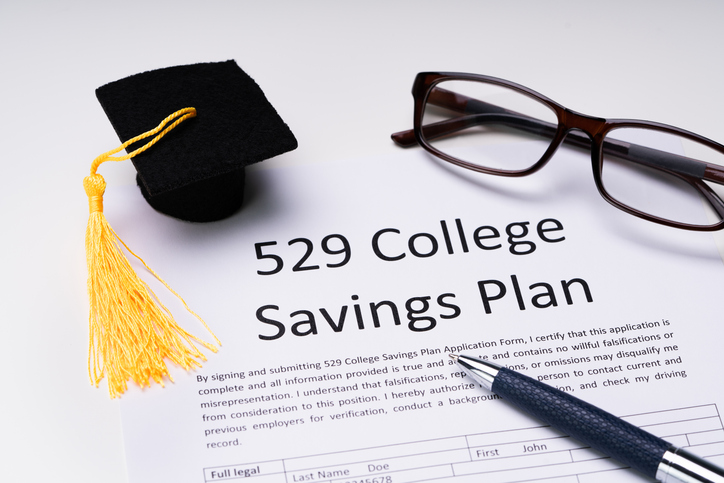When it comes to securing your financial future, choosing the right savings account can make a big difference. For families with educational needs or disability-related expenses, ABLE and 529 accounts each provide unique advantages. These accounts offer flexible planning and tax benefits, making it easier to set aside funds tailored to your specific goals. Whether you’re saving for school or ensuring future care, understanding these options can empower you to take meaningful steps toward lasting financial stability.
What Is an ABLE Account?
An ABLE (Achieving a Better Life Experience) account is a savings option specifically designed for individuals with disabilities and their families. Established under the ABLE Act, this account allows qualified individuals to save money without risking eligibility for federal benefits like Supplemental Security Income (SSI) or Medicaid. ABLE accounts can be used to cover a wide range of expenses, including medical costs, housing, transportation, education, and other disability-related needs.
One of the key advantages of an ABLE account is its tax benefits. Contributions grow tax-free, as long as the funds are used for qualified expenses. Each year, up to a certain limit can be added without affecting benefit eligibility, making it a flexible way to support a loved one’s quality of life. For those eligible, ABLE accounts provide a powerful tool for financial planning and long-term security.
What Is a 529 Account?
A 529 account is a tax-advantaged savings plan created to help families set aside funds for education. Named after Section 529 of the Internal Revenue Code, these accounts are primarily used to cover qualified education expenses, such as college tuition, room and board, books, and even some K-12 costs in certain states. One of the biggest advantages of a 529 account is its tax-free growth – as long as the funds are used for eligible educational expenses, any growth remains untaxed.
Families enjoy flexibility with 529 accounts, too. If the initial beneficiary doesn’t end up using all the funds, the account can be transferred to another family member, allowing those savings to benefit someone else’s education. Additionally, many states offer specific tax deductions or credits for contributions. Overall, 529 accounts provide families with a smart, flexible way to prepare for future educational costs.
Key Differences Between ABLE and 529 Accounts
When comparing ABLE and 529 accounts, it’s helpful to look at their unique features to understand which might be a better fit for your needs. Here are some of the key differences:
- Eligibility: ABLE accounts are available only to individuals with a qualifying disability diagnosed before age 26. In contrast, anyone can open a 529 account to save for education, regardless of age or disability status.
- Qualified Expenses: ABLE accounts cover a broad range of disability-related expenses, including healthcare, housing, transportation, and education. 529 accounts, on the other hand, are focused solely on educational expenses, such as tuition, fees, room and board, and some K-12 costs.
- Impact on Benefits: ABLE accounts are specifically designed to protect eligibility for public benefits like SSI and Medicaid. With 529 accounts, funds may count as assets, potentially affecting eligibility for these benefits.
- Tax Benefits: Both accounts allow tax-free growth when funds are used for qualified expenses. While Texas does not offer state tax deductions or credits for 529 contributions, 529 and ABLE accounts still provide valuable federal tax advantages. Growth remains tax-free in both accounts as long as withdrawals are for qualified expenses, helping you maximize your savings.
- Flexibility: 529 accounts allow transferring funds to another family member if the original beneficiary doesn’t need the funds. ABLE accounts also permit changes to the beneficiary, as long as the new beneficiary is an eligible family member who meets the account’s criteria, adding some flexibility while keeping the focus on the individual’s specific needs.
Each account has advantages depending on your goals, whether saving for education or disability-related needs.
Which Account is Right for You?
Choosing between an ABLE account and a 529 account depends on your specific goals. If you’re focused on covering disability-related expenses while preserving eligibility for public benefits, an ABLE account may be the best choice. For those prioritizing education savings, a 529 account offers flexibility and tax advantages. Consider your long-term needs and financial situation to decide which account aligns best with your goals. We’re here to help if you have questions or need guidance on making this decision.
Choosing the Best Savings Path for Your Family’s Future
Both ABLE and 529 accounts offer valuable ways to secure your financial future, whether you’re preparing for educational costs or supporting disability-related needs. Understanding these options can help you make the best choice for your family’s goals. If you’d like to discuss which account fits your needs, contact the Law Office of Carey Thompson—we can guide you every step of the way.

